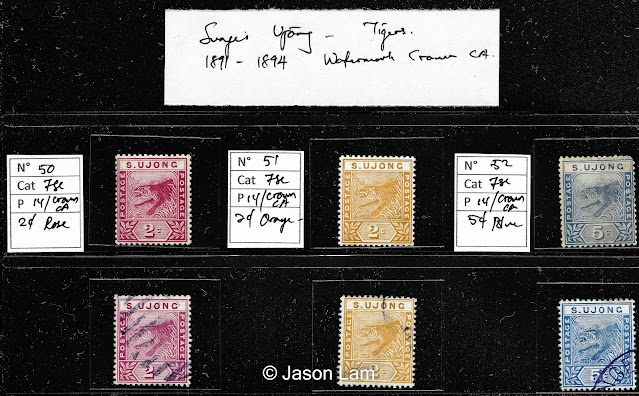Sungei Ujong is one of the original 'states' of Negri Sembilan (Negeri Sembilan). Long ago, Negri Sembilan is a confederation consisting of nine chiefdoms ( luak or luhak, in Malay), in which its formation dates back to the 18th century. The nine chiefdoms are Sungei Ujong, Jelebu, Johol, Jelai, Rembau, Ulu Pahang, Naning, Klang, and Segamat. The origin of the name, Sungei Ujong, dates back even earlier to the 14th century when it was referred to as Sang Hyang Hujung in ancient Javanese records. In retrospect, Sungei Ujong is old - very, very old. Sungei Ujong stamps are uncommon, especially the earlier issues. The last three issues before it was annexed to Negeri Sembilan in 1895 were much cheaper compared to previous issues. 1891-1894 The leaping tiger stamp issued in Sungei Ujong has a shared design since it used a common key plate with stamps used in other Federated Malay States: Pahang, Selangor, Negeri Sembilan, and Perak. 1894. Stamps were surcharged wi...






